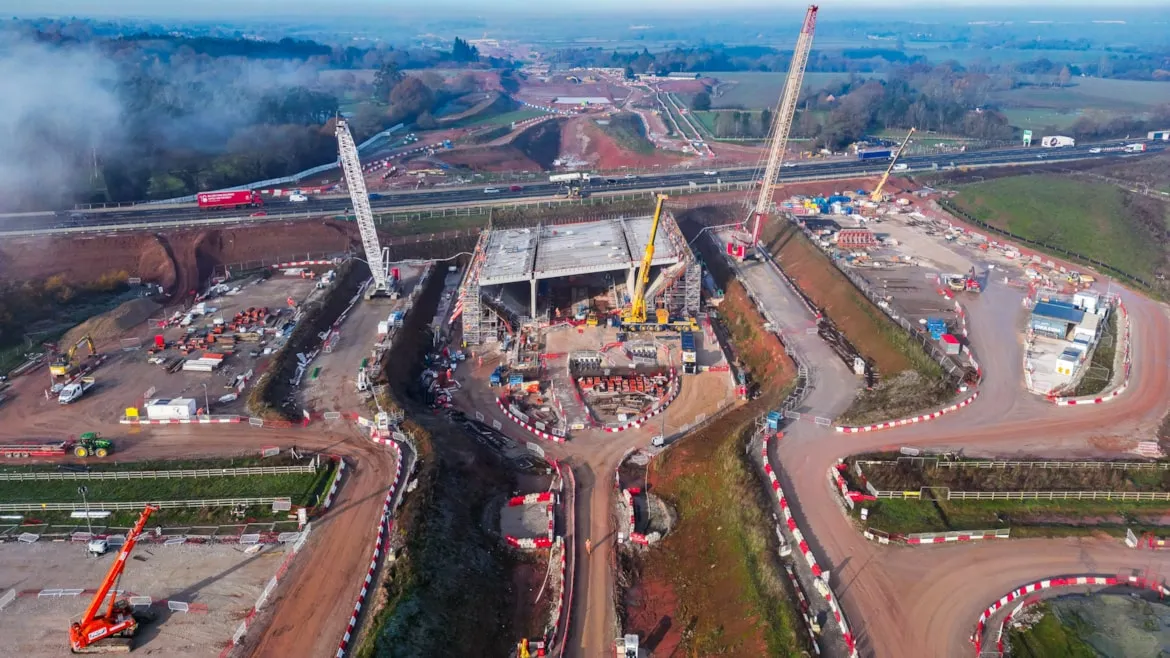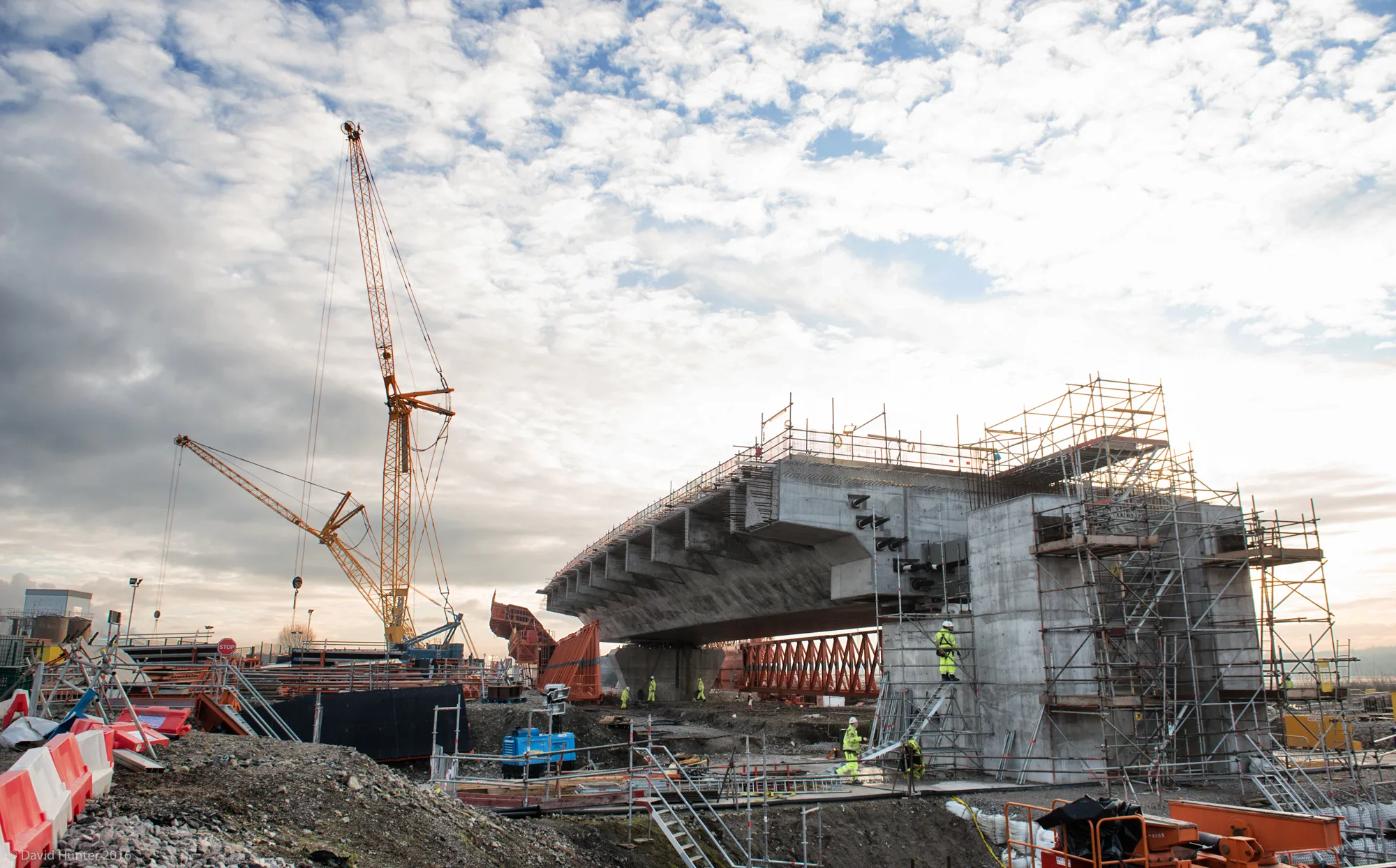
A massive concrete box structure is being built alongside the A46 bypass in the UK. When ready, this will be slid underneath the road, so that the new HS2 rail link can run underneath. The 120 colossal beams have been installed on the 14,500tonne box structure. This will carry HS2 under the A46 Kenilworth Bypass. The structure is being built on land next to the A46, rather than beneath the carriageway itself, avoiding the need for up to two years of traffic management measures.
The concrete beams, ranging between 13m and 24m in length, were carefully lifted into place using three cranes to form an integral part of the structure’s top. A team of engineers worked round the clock to successfully complete the entire operation ahead of schedule in just 14 days. With the beams now in place on top of the box, the finishing touches include completing the deck and installing parapets. In spring, the completed structure will be moved into position under the existing carriageway using an innovative technique.
This will involve a jacking mechanism, designed by specialist civil and structural engineering company Freyssinet, which will push the box across on a guiding raft at a speed of up to 2.5m/hour for a total distance of 64m. Together with National Highways and its construction partner for the West Midlands, Balfour Beatty VINCI (BBV), HS2 has started preparing for the box push procedure.
A section of the A46 between Festival Island (Coventry) and Thickthorn Island (Kenilworth) will be closed for two weekends next month for the first stage of preparation work – with plans to move the structure into position during a full closure of the A46 Kenilworth Bypass in spring 2025 for up to three weeks. During the two weekend closures, from 8pm on 7 February to 6am on 10 February and from 8pm on 14 February to 6am on 17 February, HS2 engineers will upgrade road safety barriers, adjust the layout of the central reservation and complete advance drainage works under the carriageway.
Vicki Lee, Senior Project Manager for HS2 Ltd, said: “I’d like to congratulate the entire site team for successfully moving such a large number of beams into place and as we approach the final phase of the A46 box’s construction.
At peak, a workforce of 130 people will be based on this structure, delivered by HS2’s construction partner BBV. John McNiffe, Project Director at Balfour Beatty VINCI, said: “The safe and successful installation of 120 giant beams is another great achievement for the Balfour Beatty VINCI team who are delivering this box bridge slide in Warwickshire. The next stage includes construction of the deck and installation of the bridge parapets before the bridge can be moved into position under the existing carriageway, allowing HS2 trains to pass underneath.”
David Patmore, Network Planner for National Highways, said: “Our primary concern is that works on our network cause minimum disruption for road users while still ensuring the safety of both the workforce and those using our roads. We work very closely with HS2 and its partners and welcome the innovative techniques being used to meet that objective and reduce the impact that such a major, complex project could have on the travelling public.
The structural design has been carried out by Balfour Beatty VINCI’s Design Joint Venture, made up of Mott MacDonald and SYSTRA (MMSDJV). Tim Akers, Engineering Manager for the Mott MacDonald SYSTRA Design Joint Venture, said: "We're proud of the part we've played in the development of this structure. Through significant collaboration between HS2, National Highways and Balfour Beatty VINCI, the design has been reviewed and changed from a traditional ‘top down’ approach to an offline construction method with automated rapid and safe installation, reducing the impact to road users significantly.”






